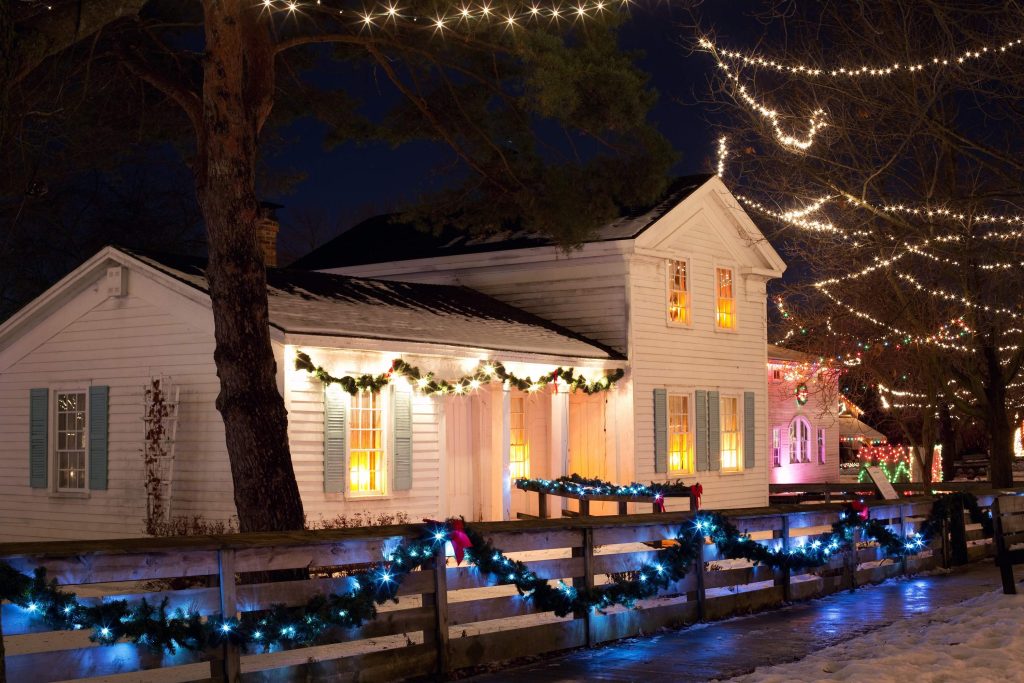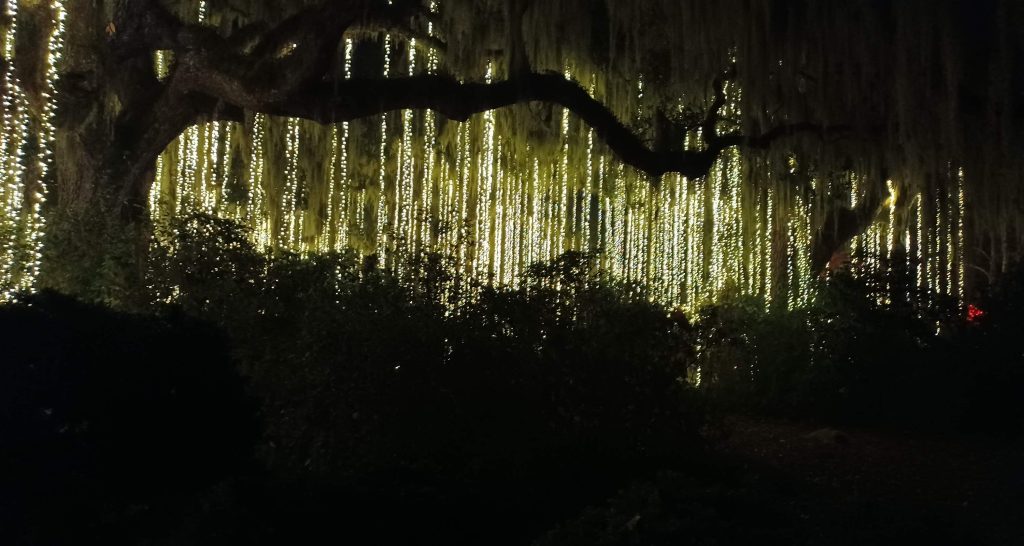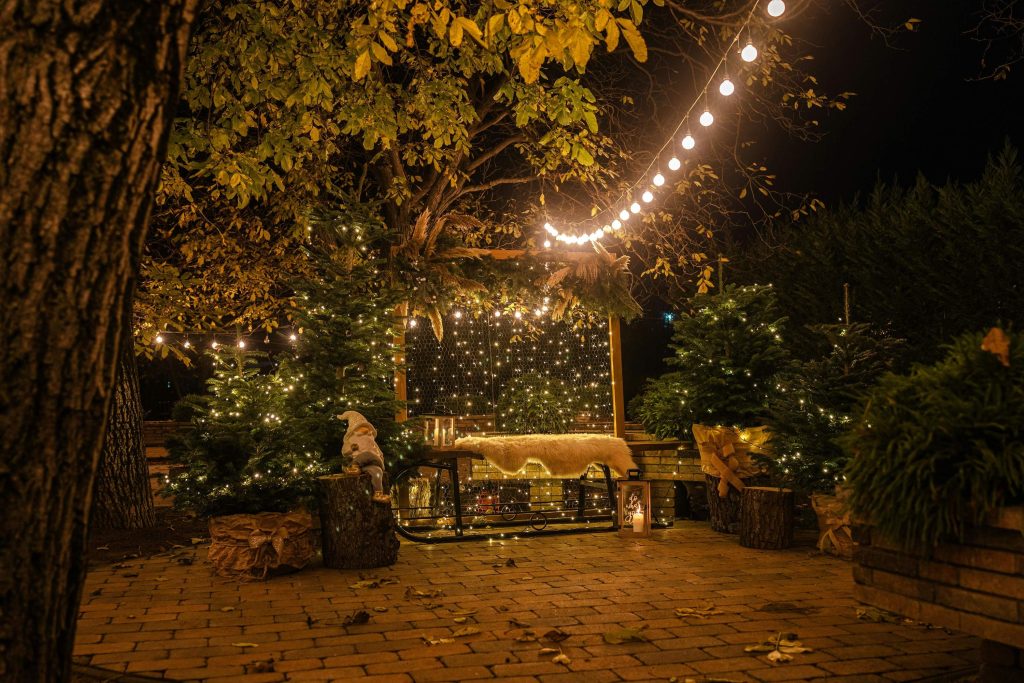The Quintessence of Determining the String Lights Length
The simple yet transformative power of string lights or fairy lights is undeniably potent in the realms of interior and exterior decoration, event planning, and overall aesthetic enhancement. These diminutive sources of luminescence are capable of adding a touch of enchantment to an ordinary space, making it extraordinary.
Yet, for all their charm and allure, one crucial factor plays a pivotal role in maximizing their potential, and that is determining the correct length. Whether you’re installing landscape lighting on your patio or adding warmth to your living room with indoor string lights, guessing the right length isn’t enough.
It’s essential to calculate accurately to ensure an even distribution of light without overloading circuits or leaving areas dimly lit. Moreover, being precise with measurements prevents unnecessary expenditure on extra length that remains unused or a shortfall leading to insufficient lighting.
This accurate measurement does not merely affect functionality but also contributes significantly towards achieving the desired ambiance and aesthetic appeal. Be it a festive occasion needing vibrant landscape string lights or a serene evening calling for subtle deck lighting, accuracy in length determination can truly make or break your lighting game.
Understanding how to measure correctly goes beyond knowing the start and endpoints; it encompasses knowledge about how much slack you need for draping, where each connection point is located, and other nuances, which will be discussed further into this post.
Determining string light lengths may seem trivial at first glance but carries immense significance when viewed through the lens of effective design execution. It provides an opportunity for creativity while adhering to practical constraints.
A Panorama of String Lights and Their Uses
If there were ever versatile luminaries that could metamorphose any space like magic wands do in fairy tales, it would have to be string lights. Their versatility extends beyond their application, venturing into a wide array of types, each uniquely designed for a particular setting.
Traditional string lights, often used for landscape lighting or adorning Christmas trees, are the most common type. These lights come in an assortment of colors and sizes and can be used both indoors and outdoors. The bulbs in traditional string lights can either be LED or incandescent depending on the desired luminosity and energy efficiency.

Then there are rope lights, encapsulated within a clear or colored flexible plastic tube. These lights offer a bright, linear light source that’s perfect for outlining paths or structures in your landscape lighting design. They are also superb choices for creating words or shapes.
Next up are fairy string lights; these give off a more delicate glow than their traditional counterparts. Their tiny LED bulbs on thin wire make them ideal for intricate designs like wrapping around vases, making centerpieces pop, or creating whimsical bedroom decor. Let’s not forget the popular globe string lights known for their large round bulbs providing a warm glow to any outdoor setting.
Landscape string lights such as these add elegance to patios, decks, or garden areas while serving as functional lighting where needed. In essence, understanding the variety of available string light types is instrumental in making an informed decision about which would best suit your needs depending on the occasion and desired ambience.
Understanding String Lights
A Detailed Exploration of String Lights
String lights, often synonymous with fairy lights, are a type of decorative lighting featuring a series of lights attached along a single unifying wire. They’re not only an effective way to illuminate a space but also ingeniously add an enchanting aesthetic dimension.
Known for their versatility, string lights have transcended the traditional holiday use and are now in great demand for various occasions such as weddings, parties, and even daily use in our homes and gardens. In essence, these lighting strings are composed of small LED or incandescent bulbs connected by an electric wire.
The number and spacing of bulbs can vary significantly depending on their intended application. Landscape string lights offer the perfect combination of functionality and decorative impact to any outdoor area.
Modern string lights come with diverse features like programmable patterns, variable color selection, and remote control operation. These advancements offer immense creative opportunities to users who want to add a touch of magic to their surroundings.
The charm lies in the versatility that these tiny glowing orbs provide. Given their flexible nature, they can be strung around trees or pillars, draped over bushes or fences, hung along walls or ceilings, or simply laid out on tables or other surfaces for an added sparkle.
Landscape string lighting applications include delineating pathways or highlighting specific garden features, which enhances both safety and aesthetics after dark. It is also worth mentioning that string lights come in weather-resistant designs, ensuring they survive harsh weather conditions when used outdoors.
Trace Back: Historical Background
The history of string lights dates back to the era when Thomas Edison invented the first practical light bulb. Following his invention was Edward Johnson’s innovation in 1882, where he hand-wired 80 red, white, and blue bulbs together, creating what is now known as Christmas lights. Over the years, string lights have evolved and diversified in terms of design, color, size, and functionality.
It was only in the late 20th century that string lights expanded beyond holiday decorations and began to make their way into daily home decor. Their popularity surged with the advent of LED technology, offering energy efficiency, longer life span, and safer usage.
These improvements transformed string lights into a household staple available in a myriad of styles suitable for every season or reason. Today’s market caters to all kinds of consumers, whether they are looking for classic warm white bulbs for a cozy ambiance or multicolored RGB LEDs for a festive vibe.
The availability of solar-powered and battery-operated versions has further broadened their application, especially in outdoor settings where power sources might be an issue. Landscape lighting embraced the trend as well, with many turning towards string lights to add charm to their gardens.
Like tiny stars scattered across the landscape, these glowing orbs can transform an ordinary garden into a magical wonderland when dusk falls. The evolution of string lights indeed reflects our evolving desire for artistic expression using light – offering not just lighting but also atmosphere and mood-setting capabilities.
Diverse Types: Identify Your Unique Features
Understanding different types of string lights is crucial to choosing the right ones for your specific needs. Consider globe string lights, which feature round bulbs that emit soft ambient lighting, making them perfect for creating cozy outdoor spaces like patios or decks.
Fairy string lights, on the other hand, are composed of tiny LED bulbs strung closely together on thin, flexible wire, giving them their signature delicate look – ideal for intricate designs such as wrapping around tree branches or floral arrangements. Some fairy light strings are even designed to be submersible, expanding their use to water features such as pools or fountains.

Rope string lights are another category where LED bulbs are encased in a clear or colored PVC tube, giving them a sleek modern look. Their sturdy design allows them to withstand harsher outdoor conditions, making them a popular choice for landscape lighting.
Novelty string lights come with an extra fun element where bulbs are enclosed in different shapes, like stars, hearts, or thematic designs like flamingos or pineapples. They add an interesting twist to your decor and can reflect personal style or celebrate various occasions.
No matter the type of string lights you choose, their unique features can lend different vibes to your space – from festive and playful to elegant and sophisticated. Thus, understanding these variations is key to achieving the desired effect, whether it’s adorning your Christmas tree or illuminating your garden pathway with landscape string lights.
The Art of Measurement in Lighting Design
The success of any lighting design hinges on accurate measurement – this holds true even when dealing with something as seemingly simple as string lights. Correctly determining the string lights length can make the difference between an elegant display and a disheveled appearance.
A common myth suggests that eyeballing will suffice when measuring for string lights. However, this method often results in either a shortage leading to unfinished designs or excess causing unsightly slackness – both scenarios undermining the visual appeal of your lighting arrangement.
In landscape lighting especially, proper measurement is vital due to its dual role in enhancing aesthetics while ensuring safety by adequately illuminating paths or steps. Therefore, understanding how much length you need based upon factors such as area coverage and installation style is key before making any purchases.
Another aspect that impacts length calculation involves bulb spacing, which needs careful consideration. The wrong spacing can disrupt uniformity, causing certain areas to be overlit while leaving others shadowed. Therefore, knowing your string light’s bulb spacing can guide you in determining the right length to use for optimal light distribution. Accounting for power cord length is equally important.
Often overlooked, this aspect could cause inconvenience if your plug point and the beginning of the lighting design lie far apart. Therefore, when planning for string lights installation – be it a cozy indoor setting or a landscape lighting project – accuracy in measurement cannot be stressed enough to ensure a visually pleasing and practically efficient result.
Factors to Consider: The Blueprint for Perfect Landscape Lighting
The first step in determining the length of your string lights is identifying your lighting purpose. Are you seeking to create a warm, festive ambiance for an outdoor gathering? Or are you highlighting architectural features of your home? Perhaps you wish to provide lighting for a path or patio? Each purpose necessitates different lengths and configurations of string lights.
A key determinant in this process is the location and specific area that the string lights will cover. Whether they are destined for indoor or outdoor use will significantly impact their length. For example, landscape string lights used outdoors would require more length than those used indoors due to the larger areas typically involved.
The area’s type also plays a significant role; whether it’s an expansive patio, an intimate bedroom setting, or a majestic Christmas tree, each has its unique measurement requirements. You must take into account both horizontal and vertical dimensions when measuring these areas.
Beyond that, consider the design or pattern you want to create with your string lights. A straight line hanging might be perfect for some spaces like pergolas or along gutters, while others like trees or fences might benefit from artistic draping or wrapping patterns. These designs also influence how much length you’ll need.
A Step-by-Step Guide: From Conceptualization to Illumination
Now that we’ve laid out the considerations, let’s delve into how precisely one goes about measuring for string lights. Start with some essential tools – a measuring tape (or laser measure), pencil and paper (or smartphone) to record your measurements – and then follow these steps:
For straight-line installation, such as along beams or across patios, simply measure the distance between your two endpoints using your tape measure.
If you’re opting for the swag style (draped) installation, the measurements must be a little more generous to account for the extra length needed for draping. Visualize your swag pattern and consider any allowances for each swag’s depth.
When wrapping around objects like tree trunks or pillars, take a flexible tape measure and wrap it around the object at the point where you want your lights to sit. Multiply this measurement by how many times you want the string lights to go round.
Remember always to account for some extra length needed for connections, slack, and just in case of any measurement errors.
The Numbers Game: Understanding Specifications
Once armed with your required lengths, it’s time to get savvy with string light specifications. Manufacturers typically indicate string light lengths on packaging or product descriptions. This length usually includes only the lit portion of the string light strand, excluding any lead or trailing cables.

Bulb spacing is another important specification that can affect your desired look and feel. A string light set with bulbs spaced far apart may cover a broader area but offer less illumination than one with closely spaced bulbs.
Avoiding Pitfalls: Learning from Common Mistakes
While measuring for string lights may seem straightforward, there are common mistakes even seasoned lighting enthusiasts make. Underestimation or overestimation of required lengths is perhaps most prevalent. Be meticulous in your measurements and always factor in additional length requirements as discussed earlier.
Another mistake is ignoring power source location; ensure that you have enough cord length to reach your power source comfortably without straining connections. Also consider possible future changes or additions while deciding on your measurements; it will save you much trouble down the line!
Real-Life Examples: Enlightened Success Stories
Drawing from real-life scenarios can often provide valuable insight and inspiration for our own projects. Below, we explore a few examples where careful planning and measurement for string lights led to spectacular results.
One homeowner transformed their patio into an enchanting retreat by measuring the space meticulously and selecting strings of lights that complemented their outdoor decor. With attention to detail, they were able to create a warm ambiance that not only enhanced their gatherings but also made the area inviting year-round. Throughout the year, the space became a focal point for social events and quiet evenings alike.
Another project featured a local café that utilized string lights to highlight its unique architectural features. By strategically placing the lights along the beams and around the windows, they created a cozy atmosphere that drew in customers both day and night, turning the space into a beloved community hub. The café became a favorite spot for locals, who appreciated the charming decor and the inviting glow of the lights. As word spread, it transformed into a gathering place where friends could enjoy coffee, share stories, and create lasting memories.
A different endeavor featured a couple who strung lights along their backyard fence, using a combination of warm white and colored bulbs to create a festive atmosphere for summer barbecues. By thoughtfully considering the layout and height of the lights, they achieved a stunning visual display that became the centerpiece of their outdoor celebrations. This transformation not only delighted their guests but also encouraged their neighbors to join in the fun, fostering a sense of community.
Conclusion: How to Determine the Length of String Lights?
Determining the right length for your landscape string lights requires thoughtful consideration, accurate measurements, and an understanding of specifications. With patience and precision, you can transform any space into your own personal light show. Just remember – it’s not just about lighting a space; it’s about creating an atmosphere that resonates with joy, warmth, and enchantment.
You may also be interested in the following posts:
